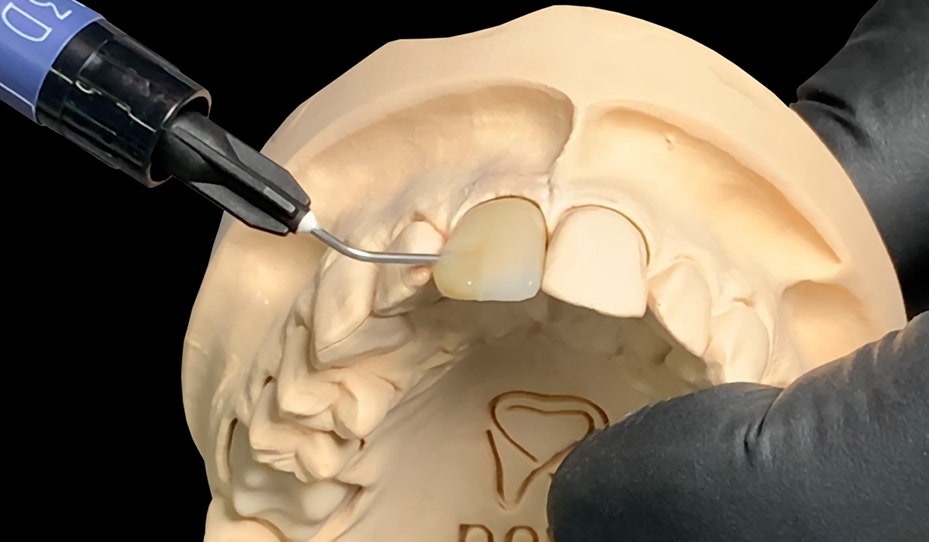I am frequently asked questions about the intraoral repair of porcelain chippings. To achieve success in repairs, it is essential to consider several important issues.
Perhaps the single most crucial issue to recognize is why the chipping occurred in the first place. For example, if loading stress is the leading cause, this should be considered during the repair.
Other issues to consider are removal of contamination, optimal roughening and chemical activation of the surface, and the prevention of contamination during the repair. Also, a rubber dam should be used to isolate the working field.
FUNDAMENTALS OF ADHESION
Adhesive procedures can be only successful by using the proper substances and methods. Different kinds of surfaces often need different treatments for success. However, the three basic fundamentals of adhesion must be respected to achieve the best results.
1) Mechanical retention through a roughened surface.
2) Chemical activation through chemically active substances.
3) High energetic bonding surface allowing for optimal interaction (wetting capacity) between the surface and the applied medium. Contamination will lower the bonding capacities and must be avoided or removed in any case.
TYPES OF FRACTURE
The most frequent fractures are porcelain only and those that include exposure of the substructure in PFZ or PFM prosthesis.
Many cases present with only limited chipping to the porcelain, for example, at the incisal edge. To achieve a durable repair in this instance, start by increasing the bonding/repair area using a fine diamond bur to create a large bevel. A fine grit bur is preferable over a medium or coarse version because a higher number of shallow grooves delivers a more optimal bonding surface than lesser deeper ones do. Additional roughening of the adherent surface by sandblasting with alumina (50 µm grain size, 2 bar pressure) is highly recommended to increase the surface area further.
When repairing porcelain chippings where the substructure is exposed, it is essential to be aware that multiple substrates are dealt with, indicating a need to adjust the repair protocol accordingly.

Clean the roughened fractured surface thoroughly. KATANA™ Cleaner is the product of choice. It is a safe and easy to use product with high cleaning power. It can be used both intra and extra orally on all kinds of dental substrates. After rinsing and thorough drying, the surface is ready for the next step, chemical activation.

CLEARFIL™ CERAMIC PRIMER PLUS contains both silane and MDP and effectively treats both silica-containing ceramics and metal oxides (zirconia) and metals. After application and thorough drying, the composite restoration can be carried out immediately without an extra bonding step. The composite of choice is a durable flowable, CLEARFIL MAJESTY™ ES Flow. It has high flexural strength, even higher than most paste-type composites. Besides that, it adapts to the surface better and easier. Quick and easy polishing and gloss retention are other highly valuated qualities of CLEARFIL MAJESTY™ ES Flow.

HINTS AND TIPS